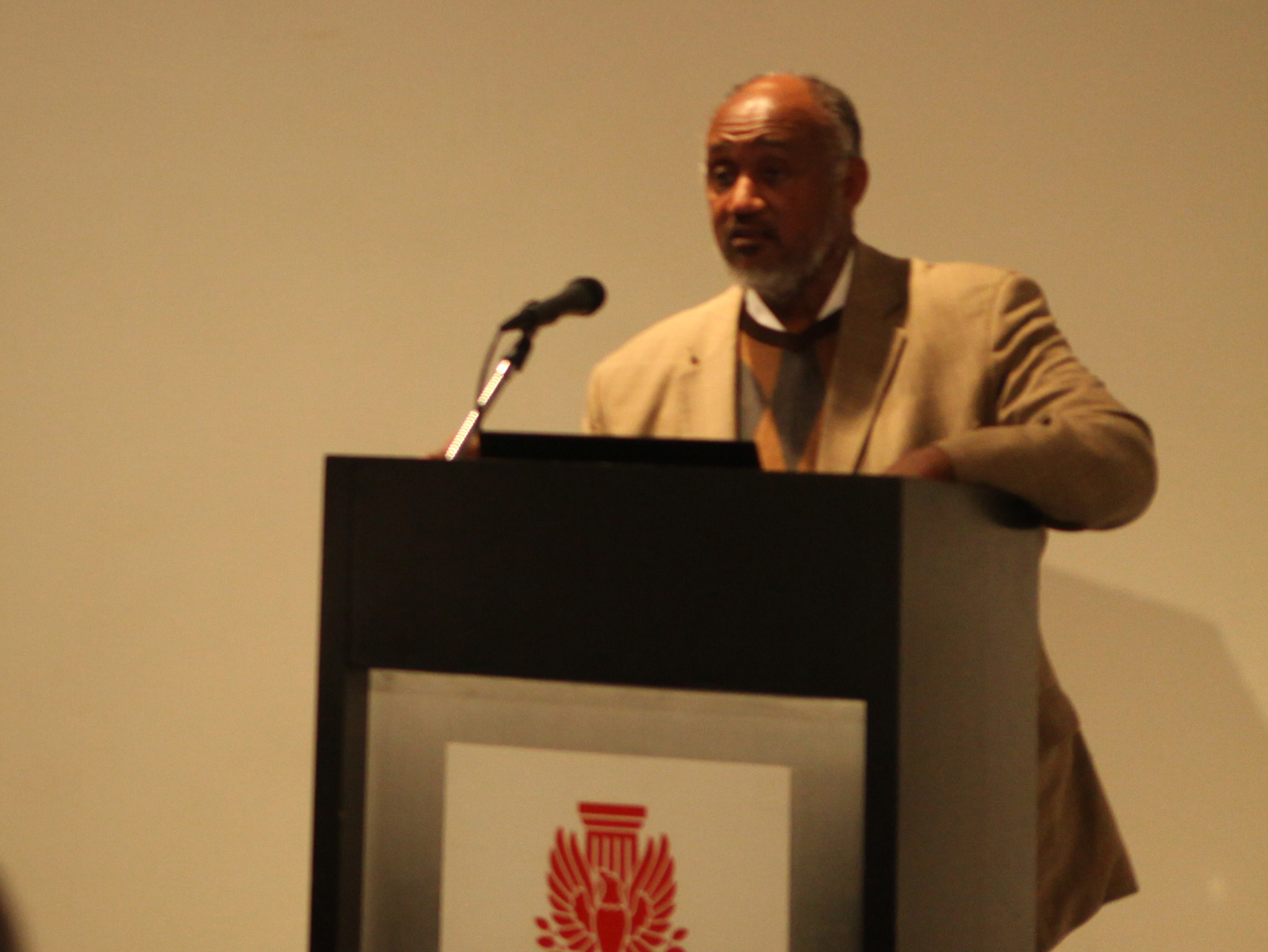by: Claire Webb
Carlton Brown is a man of big ideas and grand ideals. Honored last week at the Ratensky Lecture at the Center for Architecture, Brown talked about how his upbringing in the Civil Rights Era South shaped his philosophy of inclusivity and the importance of sharing resources equitably. Using four touch points, Brown harnessed a mantra that has shaped his role as a developer: “Generate more energy than we use, include more people than we exclude, use more waste than we create, and create more wealth than we consume.”
Brown focused on how a lack of resources functions to splinter groups, impeding community building. He described the process of gentrification as “clouded by race and class, but really a resource war” for housing and fresh food. While he cited racism, classism, and sexism as secondary factors for this phenomenon, I would argue that these elements together – not just an economic force, i.e. competition for resources – equally contribute to segregating groups and obstructing community building.
Brown also discussed the idea of “Othering” as a barrier to building communities. I couldn’t help but be reminded of philosopher Thomas Szas’s idea that power can be delineated by the one whom first describes a definition; the one, or group, who is “defined” thus becomes the Other. Once zoning and economic conditions were set up by the government in the mid-century – thus defining who could live where – Harlem became a blighted place. Brown described the lateral stretch around 116th Street that was littered with vacant, derelict buildings. It took a long time, and pioneers like Brown, to undo this pervasive defining that relegated “those people” to areas with a dearth of resources.
One way in which Brown was able to affect change was by structuring goals for the Crosstown 116th Street Project, demanding that the NYC Department of Housing Preservation and Development (HPD) meet expectations that were far beyond the norm for low-income housing. Even in 1996, many of the amenities we now consider standard in green design – an efficient building envelope, encouragement of activity through way-finding, air free of pollutants – were not considered to be appropriate for that housing type. By overstepping and setting up lofty goals, Brown achieved a sustainable building on a shoestring budget. When Verizon refused to install broadband, he worked with nearby Columbia University to add the systems in the apartments for just $1 per day – for the entire building. He set up a geothermal system in the basement (and told us in good spirits that the confounded inspector wouldn’t release a Certificate of Occupancy until he installed a superfluous boiler). By investing in local businesses on the ground floor (a health club, and a butcher) – and by mixing in market-rate housing – Brown was able to reverse expectations of what subsidized housing “should” be.
As architects, we are concerned with the details, so it was refreshing to hear Brown convey a sense of monumental inclusivity, painting with a large brush. After specifying endless ductwork, paint chips, sustainable vinyl – and eking out design elements in the process – it’s easy to lose sight of a grander mission. Brown reminded us why we’ve gotten into this type of work, and how satisfying it can be. It’s clear that Brown walks the walk, as he has his hand in multiple and remarkable projects. Right now he is thinking about how to best bring fresh food to “food deserts” in Brooklyn and the Bronx.
Carlton Brown’s lecture was invigorating because his untempered optimism in the face of obstacles showed through, even after decades as a developer up against difficult challenges. Good-naturedly, Brown pointed to ways in which he has learned from his mistakes; indicative of his idealism, he is constantly incorporating new technologies in his projects.
Claire Webb studied astronomy and philosophy at Vassar College, but an interest in art history and architecture led her to the position of Marketing Director at Edelman Sultan Knox Wood / Architects.
Event: 2013 Ratensky Lecture: Carlton Brown
Location: Center for Architecture, 11.20.13
Speaker: Carlton Brown, Founding Partner and Chief Operating Officer, Full Spectrum
Organizers: AIANY Housing Committee











